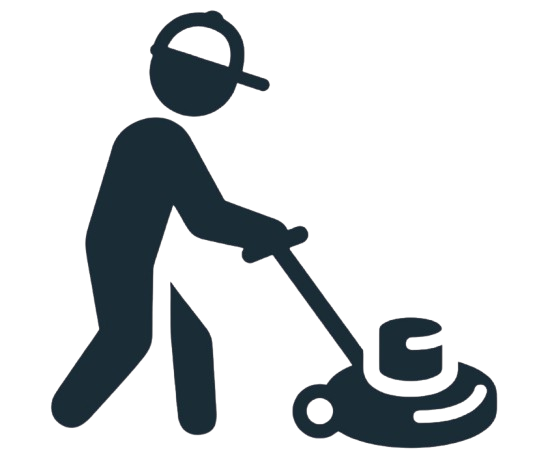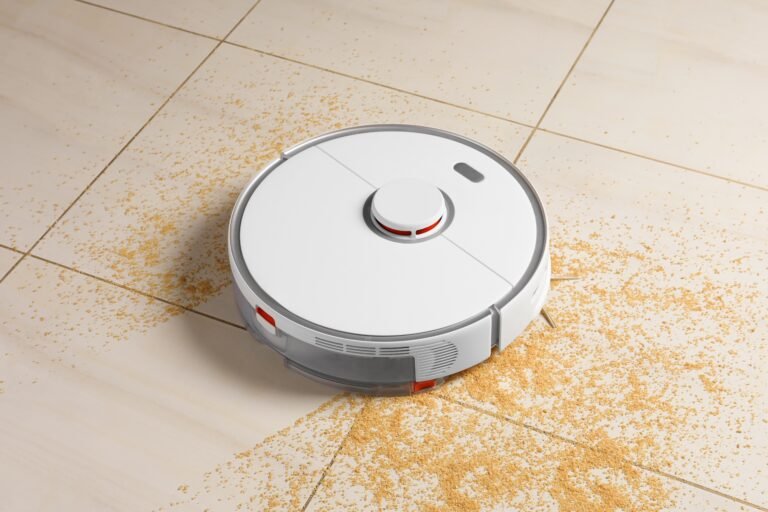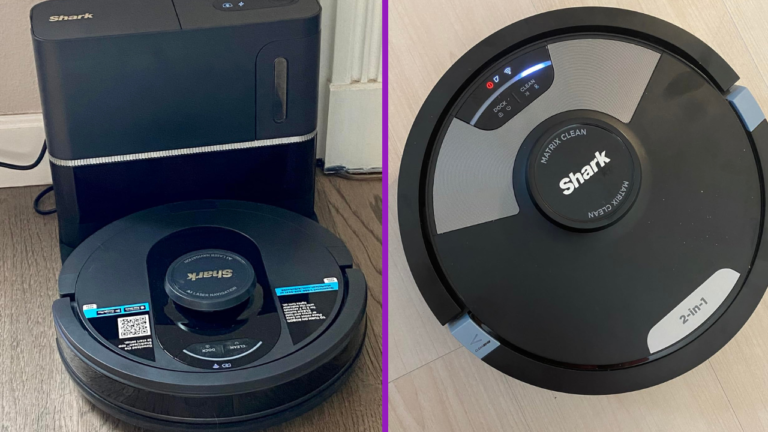Parquet flooring is a timeless and elegant choice that has been gaining popularity in homes and commercial spaces for decades. Known for its intricate patterns, natural beauty, and versatility, parquet flooring can transform any room into a sophisticated, warm, and inviting Space. However, as with any type of flooring, there are important considerations when deciding if a parquet is the right option for you.
This comprehensive guide will explore parquet flooring, its pros and cons, and expert tips to help determine if it is the best choice for your Space. Whether you’re considering a home renovation or upgrading a commercial area, this article will give you the insights needed to make an informed decision.
Table of Contents
What is Parquet Flooring?
Parquet flooring consists of small wooden blocks or strips arranged in geometric patterns, creating intricate designs that range from classic to contemporary. Traditional parquet patterns include herringbone, chevron, basketweave, and brickwork. Still, modern styles have introduced endless possibilities for customization. “AArquet” originates from the French word “marqueterie,” which refers to arranging wooden pieces to form decorative flooring.
Parquet flooring can be made from various hardwood species, such as oak, maple, walnut, and cherry, or even more exotic woods like teak and mahogany. Engineered parquet flooring is also available, where the top layer consists of hardwood, and the bottom layers are made from plywood or other materials, providing stability and making it more affordable.
The History of Parquet Flooring
Parquet flooring dates back to the 16th century, initially installed in the palaces of French nobility, such as Versailles. Its aesthetic appeal and ability to withstand heavy foot traffic made it a favoured choice for prestigious buildings. Over time, the artistry of parquet flooring spread across Europe and beyond, evolving into a flooring option that combines beauty and durability.
Today, parquet flooring has seen a resurgence, especially in homes that value craftsmanship, design, and timeless appeal.
Pros of Parquet Flooring
1. Timeless Beauty and Elegance
One of the most significant advantages of parquet flooring is its undeniable beauty. The intricate patterns and natural wood tones can create a stunning focal point in any room. Parquet flooring can elevate a space from ordinary to extraordinary, giving it an air of luxury and sophistication.
Whether you choose a classic herringbone or a more contemporary geometric pattern, parquet flooring offers a sense of artistry tthat’shard to achieve with other flooring types. The natural variation in wood grains and tones adds warmth and texture to your Space.
2. Durability and Longevity
Parquet flooring is known for its durability, especially when made from high-quality hardwood. With proper care and maintenance, it can last for decades, sometimes even a century or more. It is resistant to wear and tear, making it suitable for high-traffic areas like hallways, living rooms, and commercial spaces.
Hardwood parquet flooring can be sanded and refinished multiple times, which allows you to maintain its beauty over time. Even when the surface becomes scratched or worn, refinishing can restore it to its original glory.
3. Versatility in Design
One of the standout features of parquet flooring is its versatility. Parquet can be designed in a wide range of traditional and modern patterns, making it suitable for various interior styles. The most common designs include:
- Herringbone: A timeless pattern that adds a sense of movement to a room.
- Chevron: Similar to herringbone but with a more angular, zigzag effect.
- Basket Weave: This creates a woven appearance, adding texture to your flooring.
- Brick Pattern: A simple yet effective design that mimics brickwork for a structured look.
This versatility in pattern design allows homeowners to create unique and personalized flooring layouts that complement the SSpace’s architecturee and decor.
4. Eco-Friendly Choice
Parquet flooring is an eco-friendly choice, especially when made from sustainably sourced wood. Wood is a renewable resource, and many manufacturers now prioritize sustainable practices, ensuring that the wood used for parquet flooring comes from responsibly managed forests. Additionally, parquet floors can be recycled or repurposed at the end of their lifespan, reducing their environmental impact.
For those concerned with indoor air quality, solid wood parquet flooring doesn’t contain harmful chemicals or toxins, unlike some synthetic flooring options that may be off-gas over time.
5. Increases Property Value
Homes with parquet flooring are often seen as more luxurious and stylish, which can enhance the overall value of your property. Potential buyers tend to appreciate the craftsmanship and classic beauty of parquet floors, which may make your home more appealing. Parquet flooring is considered a high-end feature, and having it in your home can help you attract discerning buyers or renters.
6. Ease of Repair and Maintenance
Parquet flooring can be relatively easy to care for when it comes to maintenance, provided it is sealed correctly. Regular sweeping or vacuuming and occasional mopping using products designed for wood floors will keep the parquet looking its best.
One distinct advantage of parquet flooring is that individual tiles or planks can be replaced if damaged rather than the entire floor being redone. This makes repairs more cost-effective and less invasive than other flooring options.

Cons of Parquet Flooring
Despite its many advantages, parquet flooring does come with some drawbacks that are worth considering.
1. Cost
One of the most significant disadvantages of parquet flooring is its cost. Parquet is generally more expensive than other types of flooring, such as laminate or carpet, especially when using high-quality hardwood. The intricate patterns and the labour-intensive installation process also add to the overall cost. Due to increased complexity and craftsmanship, custom-designed parquet flooring can become even more expensive.
That said, engineered parquet flooring offers a more affordable alternative, though it still tends to be pricier than other options.
2. Susceptible to Moisture
Parquet flooring, especially when made from solid hardwood, is susceptible to moisture. Excess moisture or water can cause the wood to swell, warp, or even crack over time. This makes parquet less suitable for areas with high humidity or moisture levels, such as bathrooms, kitchens, or basements, unless you opt for an engineered parquet for moisture resistance.
Control the humidity levels in the room and clean up any spills promptly to minimize the risk of damage.
3. Scratching and Denting
While parquet flooring is durable, it’s not impervious to scratches and dents; heavy furniture, sharp objects, and pet claws can all cause visible damage to the surface. Although parquet can be refinished to repair scratches, repeated refinishing can reduce the thickness of the wood over time, limiting the number of times it can be restored.
If you have pets or young children, it may be essential to consider how susceptible your parquet flooring will be to scratches and scuffs, especially in high-traffic areas.
4. Requires Skilled Installation
Installing parquet flooring is not a DIY project for most homeowners. The intricate patterns and the need for precision require the skills of a professional installer. Mistakes during installation, such as misaligned tiles or uneven surfaces, can be costly and affect the floor’s overall look.
Hiring a skilled professional for the installation adds to the parquet flooring cost, but it’s necessary to ensure that the patterns align perfectly and the floor remains even and stable.
5. Fading Over Time
Wood floors, including parquet, are susceptible to fading over time when exposed to direct sunlight. The ultraviolet (UV) rays in sunlight can cause the wood to lighten or darken unevenly, which can be particularly noticeable with intricate parquet patterns. Window treatments, such as blinds or curtains, can help protect your floor from UV exposure, but this is still a factor to consider if your room has large windows or skylights.
Regularly moving furniture and rugs can also help prevent uneven fading in high-sunlight areas.
Expert Tips for Choosing and Maintaining Parquet Flooring
If you’re leaning toward parquet flooring for your home or office, here are a few expert tips to help you make the most of your investment.
1. Consider the RRoom’sFunction
Before deciding on parquet flooring, consider how the room will be used. For high-traffic areas like hallways or living rooms, you’ll want to choose a durable wood species, such as oak or maple, that can withstand wear and tear. In rooms with higher moisture levels, like kitchens, opt for engineered parquets or avoid parquets altogether.
Additionally, consider whether the room gets a lot of natural light, as wood floors can fade over time due to sunlight exposure.
2. Choose the Right Pattern for the Space
Different parquet patterns create various visual effects. For example, herringbone and chevron patterns can make small rooms feel larger by drawing the eye in specific directions. In contrast, more intricate designs like basketweave or Versailles patterns can add depth and interest to larger spaces.
Consider how the pattern works with the room’s decor and architecture. In traditional homes, classic parquet patterns might complement the existing style, while modern interiors may benefit from more abstract or geometric designs.
3. Protect Your Investment with Proper Care
To ensure the longevity of your parquet floor, take steps to protect it from damage. Use felt pads under furniture to prevent scratching and avoid dragging heavy objects across the floor. Place rugs or mats in high-traffic areas to reduce wear, and be mindful of the potential for moisture damage, especially in rooms where spills occur daily.
Regularly sweep or vacuum the floor to remove dirt and debris that can scratch the surface. Use a damp mop with a cleaner specifically designed for wood floors, and avoid harsh chemicals that could strip the finish.
4. Maintain Consistent Humidity Levels
Wood is sensitive to changes in humidity, which can cause it to expand or contract. To protect your parquet floor, maintain consistent indoor humidity levels, ideally between 30% and 50%. You can use a humidifier during dry months and a dehumidifier in the summer to prevent the wood from swelling or shrinking.
5. Refinishing Your Parquet Floor
One of the great benefits of parquet flooring is that it can be refinished multiple times. If your parquet floor shows signs of wear, such as scratches, dullness, or minor water damage, sanding and refinishing can bring it back to life. However, it is essential to know that this process should only be done by professionals, as parquet patterns require careful attention to ensure they remain even and intact.
Refinishing parquet floors typically involves sanding down the top layer of the wood and applying a new coat of finish to restore the shine and protect the wood.

6. Use Area Rugs to Prevent Damage
While parquet flooring is incredibly durable, it can still benefit from the added protection of area rugs. Placing rugs in high-traffic areas, such as entrances and living rooms, can help prevent scratches, dents, and general wear. Rugs also provide comfort underfoot and can add another design layer to complement your parquet floor.
When choosing rugs, ensure they have a non-slip backing or use a rug pad to keep them securely in place without damaging the floor.
7. Test Samples Before Committing
Before making a final decision, ordering parquet flooring samples is always a good idea. This allows you to see how the different wood species, finishes, and patterns look in your Space. Lighting can significantly affect how the wood appears; what looks great in a showroom might not have the same effect in your home.
Placing samples in various areas of the room can show how the parquet will interact with your furniture, wall color, and natural light.
Conclusion: Is Parquet Flooring Right for You?
Parquet flooring is a stunning, versatile, and durable option for anyone looking to add elegance and character to their Space. Its intricate patterns and the natural beauty of wood create a visually striking and timeless look that can elevate any room. However, parquet flooring does come with specific challenges, such as higher upfront costs, sensitivity to moisture, and the need for skilled installation.
If you value craftsmanship and design flexibility and are willing to invest in proper maintenance, parquet flooring can be a long-lasting and valuable addition to your home. However, if you are concerned about cost, moisture exposure, or potential damage from pets or heavy furniture, you may want to explore other flooring options.
Whether parquet flooring is right depends on your preferences, lifestyle, and the room’s specific needs; by weighing the pros and cons and considering expert tips, you can make an informed decision that aligns with your design goals and practical requirements.





I think your website is running slow. i am searching for Gym flooring dubai UAE and i find your website but your website is slow, take a look.
Hey i Love your work i really appreciate that. Also take a look at our special Gym Rubber flooring dubai tiles
Thanks to Share your valuable information with us anchor
Thanks for your post. I like your work you can also check mine anchor text
Thanks for your post. I like your work you can also check mine anchor text
https://world.dealsclassified.online/story/smart-whip-elevating-culinary-excellence-with-innovative-solutions
https://doomelang.com/register
A.i driven god level digital marketing agency delhi
A.i driven god level digital marketing agency delhi
This is very interesting, You are a very skilled blogger.
I have joined your feed and look forward to seeking more of your fantastic post.
Also, I have shared your website in my social networks!
My homepage :: view it now